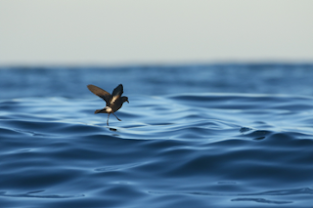Dr A Sanz Aguilar illustrates the SEAGHOSTS projects. Its aims and partners. Meanwhile she tells us about the ecology and behaviour of this extraordinary petrel. In Spanish: here
This blog tracks the scientific activity of the Animal Demography and Ecology Unit of the IMEDEA (CSIC-UIB). Contents on animal demography, capture-recapture, APHIS, upcoming workshop, publications
Friday, 26 April 2024
Saturday, 20 April 2024
SEAGHOSTS project on Storm Petrels!
 |
| Photo: V. Paris |
Thursday, 18 April 2024
GEDA conference on Lizards !
Dr. A. Rotger will give a seminar on the ecology and life-history of the Balearic Wall lizard at the Visitor Centre of Carbrera National Park in Colonia St Jordi.
The seminar is free and for all public. Friday 19/04/2024, 19h - Colonia St Jordi.
Tuesday, 9 April 2024
New Publication on mortality of migratory birds!
Serratosa, J., Oppel, S., Rotichs, S, Santangeli, A., [...] , Jones, V. R. 2024 Tracking data highlight the importance of human-induced mortality for large migratory birds at a flyway scale. Biological Conservation 293, 110525
In a shell: Despite stable frequencies of human-induced mortality over the past 15 years in the African-Eurasian flyway, conservation efforts targeting energy infrastructure and other human activities are necessary to mitigate these threats and safeguard bird species.
Abstract: Human-induced direct mortality affects huge numbers of birds each year, threatening hundreds of species worldwide. Tracking technologies can be an important tool to investigate temporal and spatial patterns of bird mortality as well as their drivers. We compiled 1704 mortality records from tracking studies across the African-Eurasian flyway for 45 species, including raptors, storks, and cranes, covering the period from 2003 to 2021. Our results show a higher frequency of human-induced causes of mortality than natural causes across taxonomic groups, geographical areas, and age classes. Moreover, we found that the frequency of human-induced mortality remained stable over the study period. From the human-induced mortality events with a known cause (n = 637), three main causes were identified: electrocution (40.5 %), illegal killing (21.7 %), and poisoning (16.3 %).
Additionally, combined energy infrastructure-related mortality (i.e., electrocution, power line collision, and wind-farm collision) represented 49 % of all human-induced mortality events. Using a random forest model, the main predictors of human-induced mortality were found to be taxonomic group, geographic location (latitude and longitude), and human footprint index value at the location of mortality. Despite conservation efforts, human drivers of bird mortality in the African-Eurasian flyway do not appear to have declined over the last 15 years for the studied group of species. Results suggest that stronger conservation actions to address these threats across the flyway can reduce their impacts on species. In particular, projected future development of energy infrastructure is a representative example where application of planning, operation, and mitigation measures can enhance bird conservation.
New Publication: Little Bustard densities!
Santangeli A, Pes M, Cardillo A, ... Rotger A. (2025). The importance of extensively managed grasslands and protected areas for a flagship ...

-
Photo: P. Henry at IUCN The increasing sightings of the Monk Seal Monachus monachus in Italy and central Mediterranean indicate a possible i...
-
Dr. A. Santangeli explains here why protected areas are insufficient to reduce the current biodiversity loss. They should be larger, better ...
-
Arrondo, E., Moleón, M., Cortés-Avizanda, A., Jiménez, J., Beja, P., Sánchez-Zapata, J.A, Donázar, J.A. 2018. Invisible barriers: Different...





